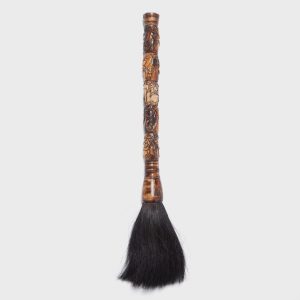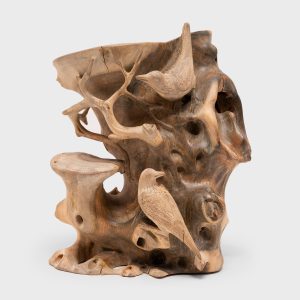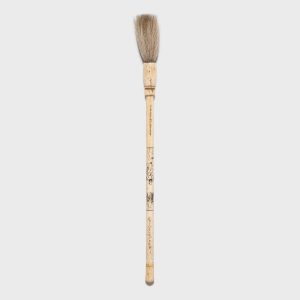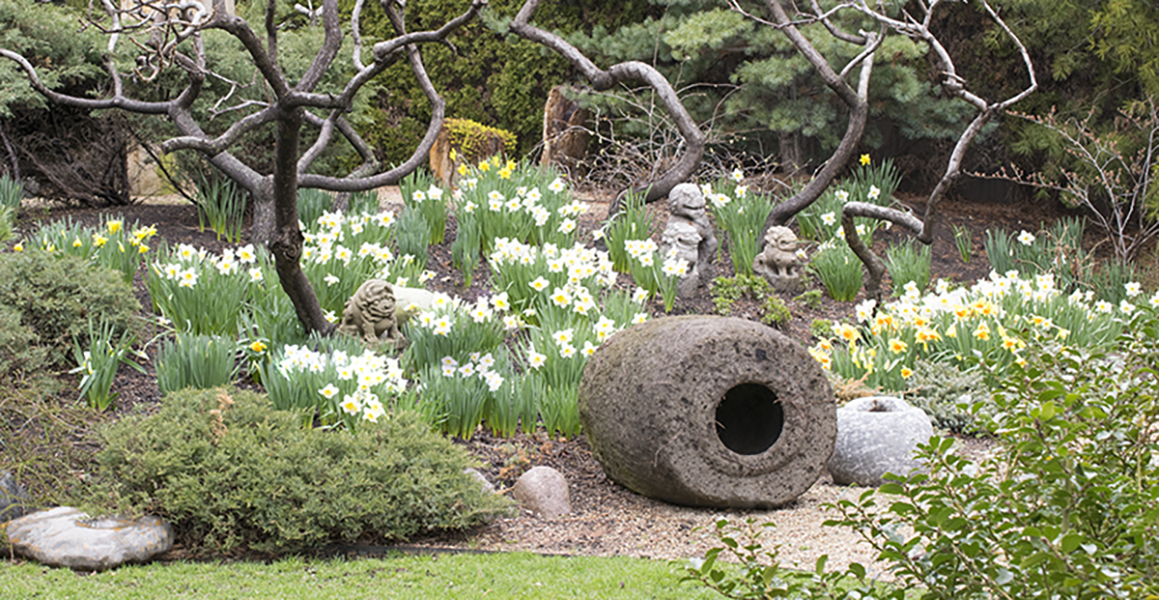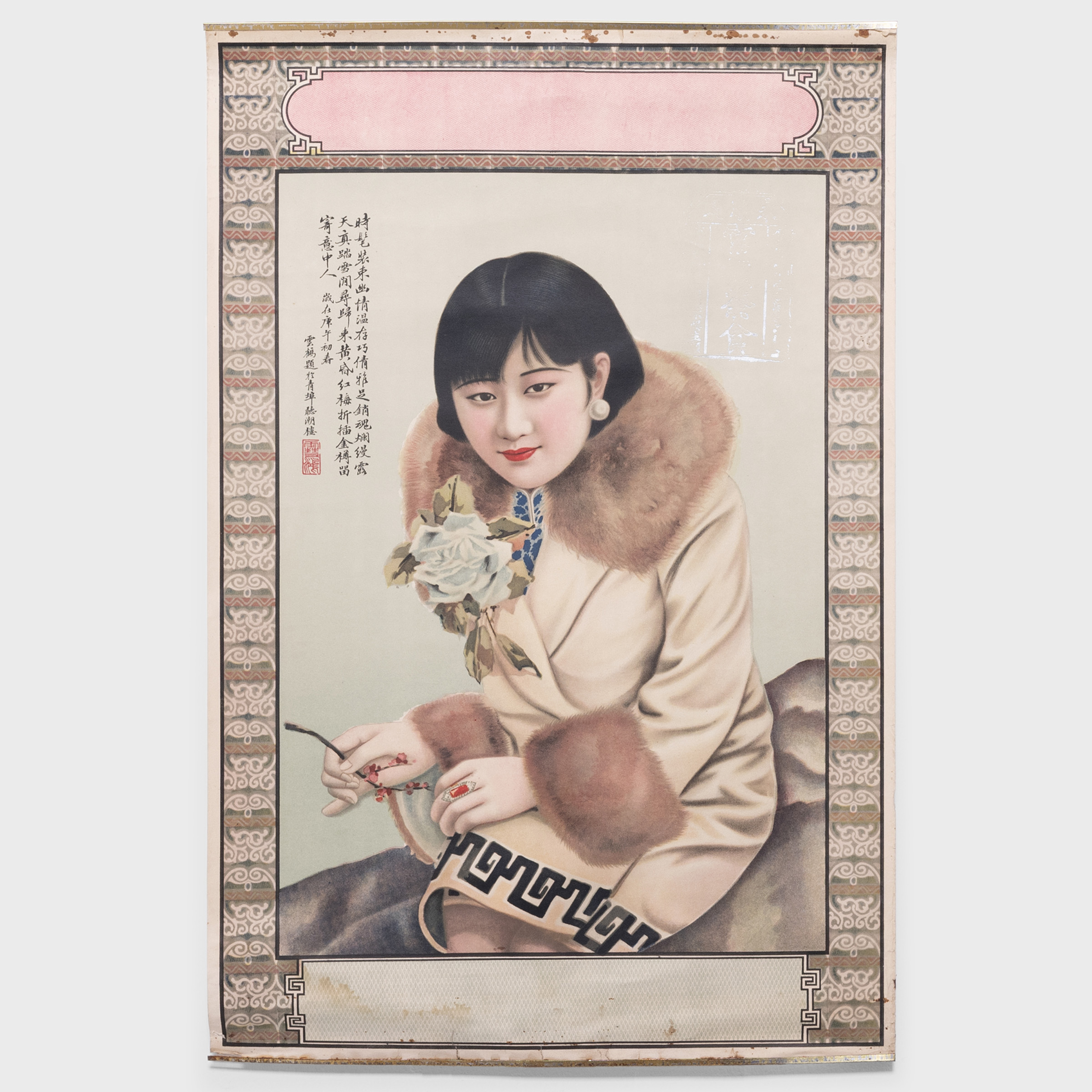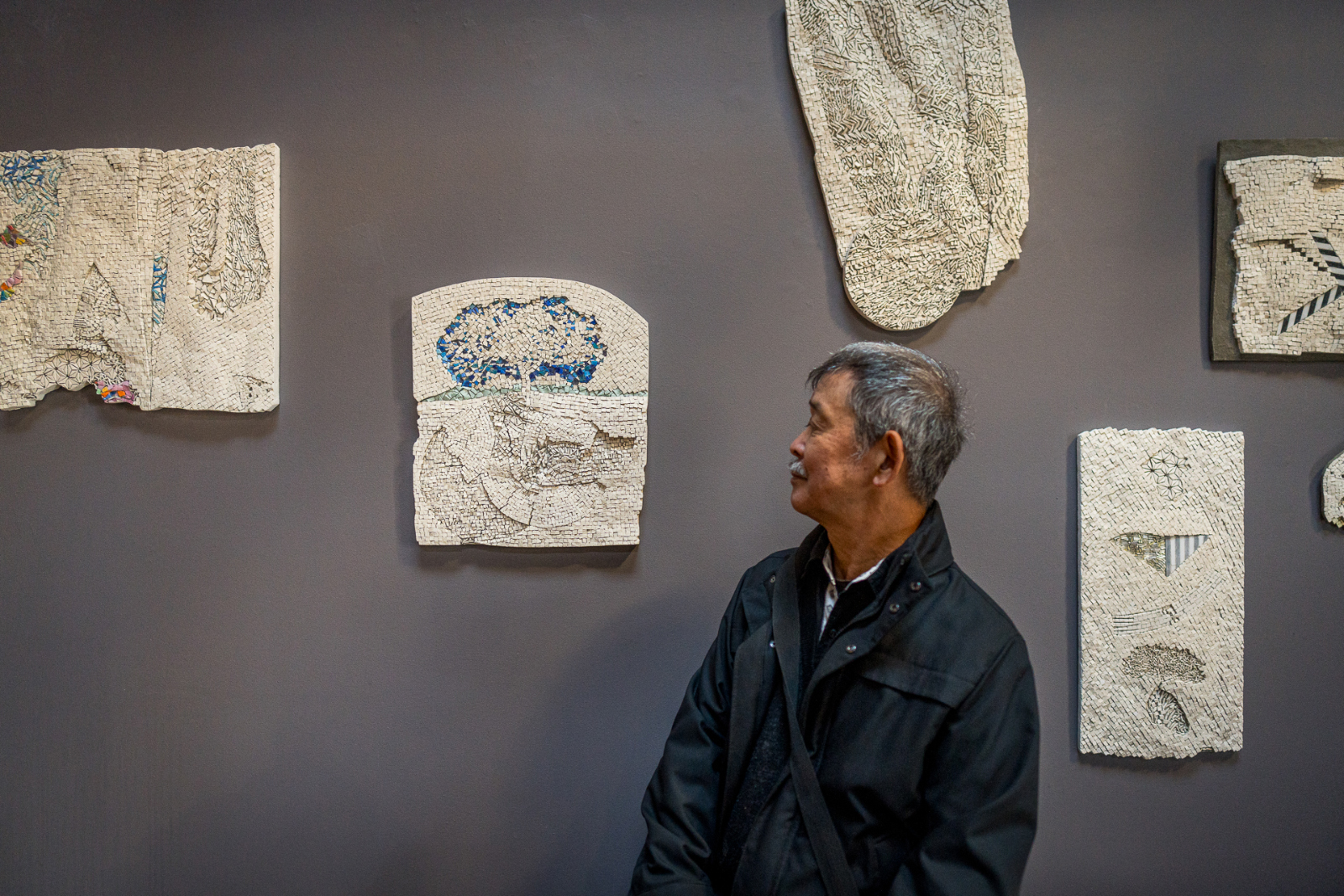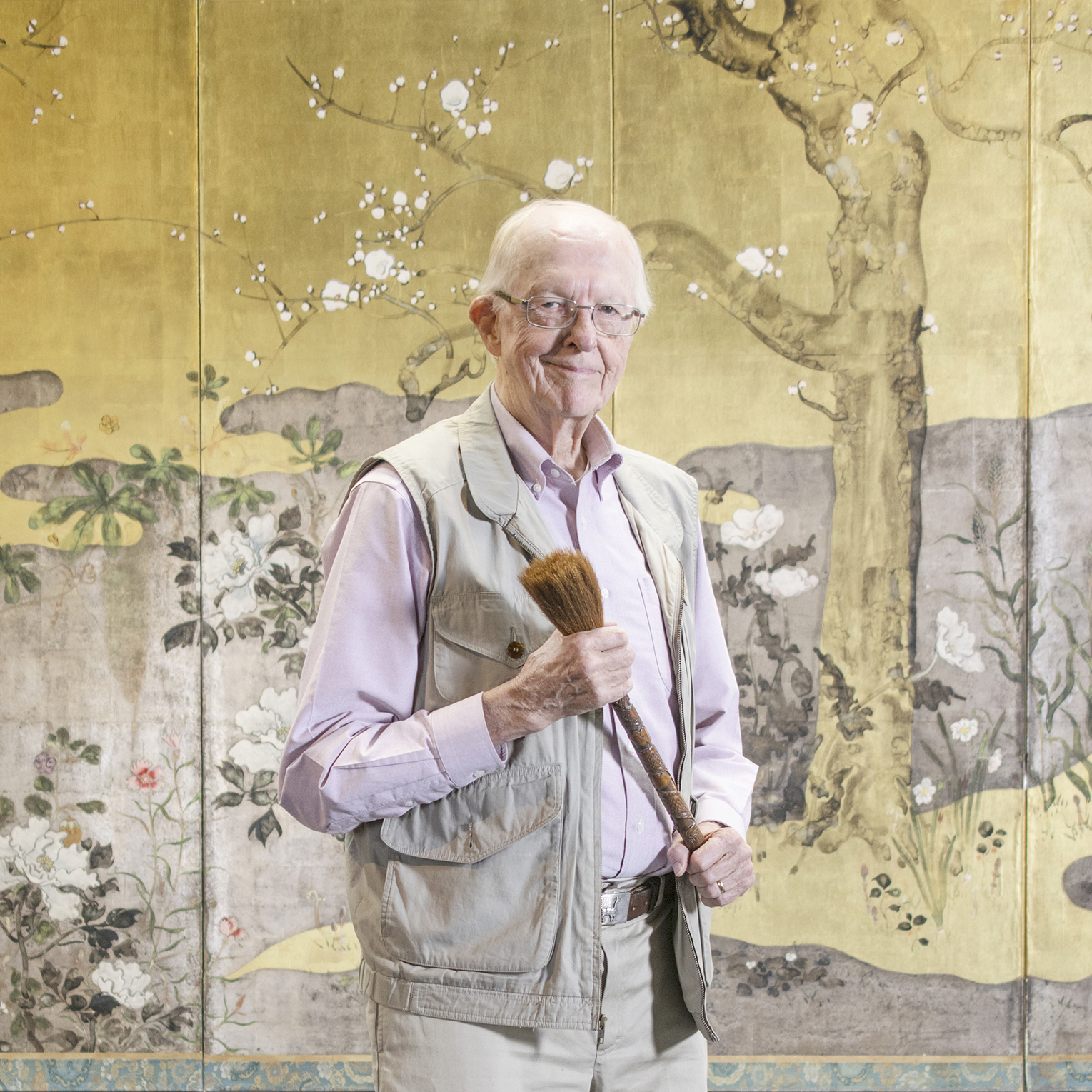
Collector’s Edition: The Calligraphy Brushes of George Johnson
Collectors have a unique commitment to the beauty and intrigue of objects—they are restless, curious compatriots with an eye for the special and rare. Theirs is an incurable wonder that asks, ‘What else can I find?’ They relish the pursuit of the sublime and unexpected.
At PAGODA RED, we’re fortunate to meet collectors on the quest to find that perfect missing piece. Some we’ve greeted at the beginning of their journey, when a single object captivated them, and enticed them to keep digging. One such client is George Johnson, a friend of the gallery for nearly 20 years, and a humble, enthusiastic connoisseur of Chinese calligraphy brushes. During a recent visit to Pagoda Red, Johnson caught up with owner Betsy Nathan, brushes in tow, to reminisce and reconnect over his journey to build his collection.
The Making of a Curious Collector
The assemblage Johnson created with his wife, Marilyn, has come to be one of the country’s premiere private collections, which has recently been accepted into the permanent Asian Art collection of the Minneapolis Institute of Art. It was a business trip in the 1970s that brought Johnson, a journalist and media specialist, to Asia. First Japan, then Hong Kong and Taiwan. The experience left an indelible mark.
“That was my first real taste of Asian art, culture and craft—and all the wonders of that culture,” says Johnson.
It can be said that collections reveal things about their owners. “I grew up in a German family with good taste,” Johnson says. His relatives would bring back incredibly fine, detailed figures of horses and cows from Europe. He remembers each piece clearly. Attuned to art of woodcarving, Johnson was captivated by the iconography on Chinese calligraphy brushes. Bucolic scenes, mediating monks and animals from the zodiac are all depicted in his collection. The meticulous workmanship recalls those European animal figurines that he loved, and Johnson delights in the striking iconography rendered in cinnabar lacquer or created in maple on every brush.
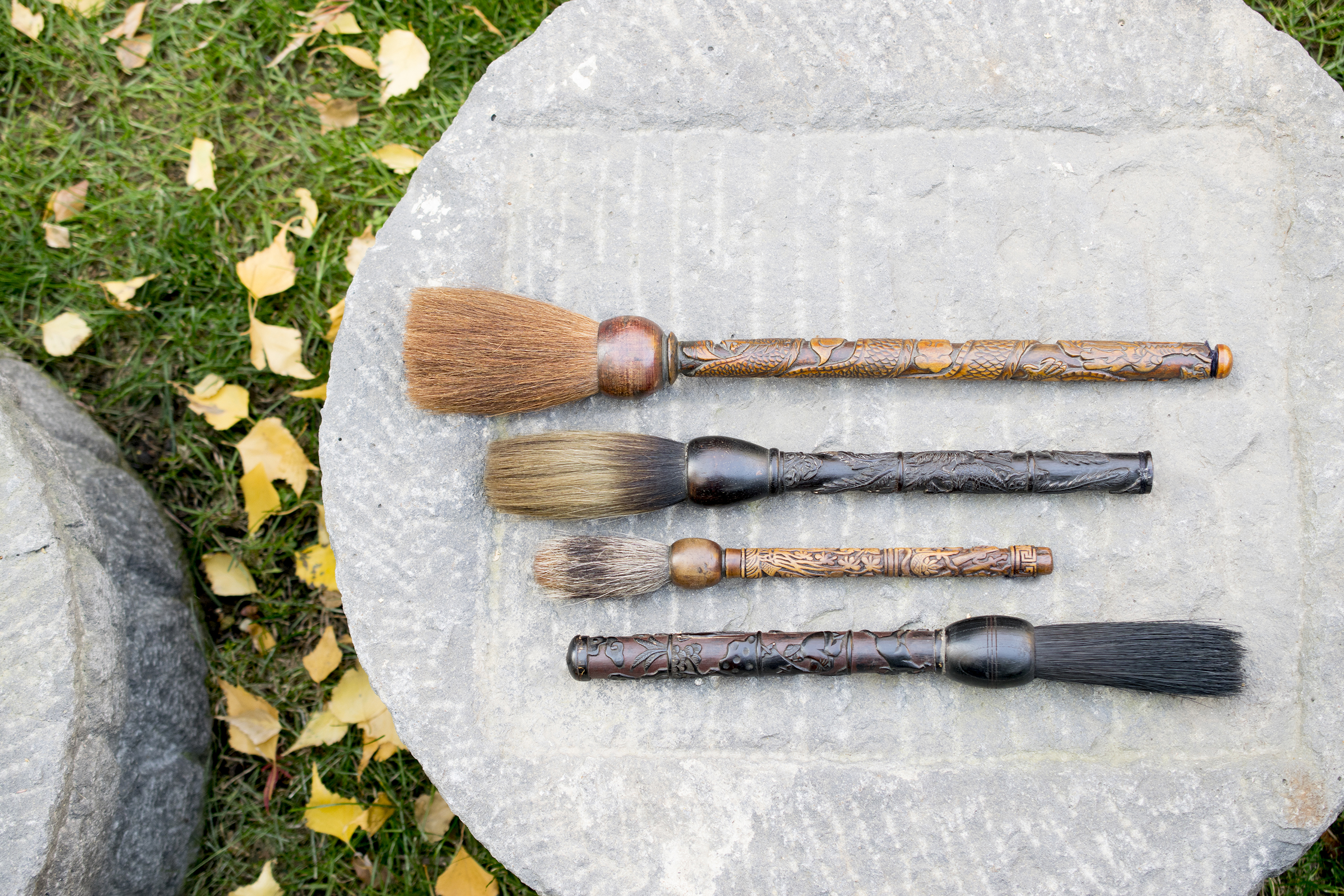
Humble Beginnings & Provincial Brushes
In the mid 1990s, PAGODA RED founder Betsy Nathan visited China on a buying trip and met a collector with a large assortment of Chinese calligraphy brushes. They were hand-carved, rich with personality and vivid detail. She hadn’t seen anything like them. No two were the same. Their provenance suggested 19th century provincial China. The pieces showcased naturalistic forms in humble materials: bamboo, stone, wood. There were no ornate decorations or lavish declarations of wealth on the handles.
“These are provincial calligraphy brushes,” says Nathan. “If you were a highly trained artist, well-supported and acclaimed you probably would have had the means to purchase very expensive brushes made of important woods. If you were a lesser known provincial artist you may not have had the means to buy something fine, but maybe you spoke with your friend who was a carpenter and asked him to create a spirited one with a dragon because you were born in the year of the dragon, and you wanted that symbolism on your painting table.”
Johnson met Nathan just as she was acquiring those first calligraphy brushes. The PAGODA RED collection was different than the traditional brushes associated with renowned calligraphers—it wasn’t imperial, hardwood or even heavily sought after. These were quiet objects, each an individual marker of ordinary life. “I was looking for the best brushes,” says Johnson.
One of the truest assurances an object with history can offer is craftsmanship. In a time before the sooty, smoky progress of machines and factory lines, there was certainty in how things were done. The carved reliefs, the lacquered finishes, the bulbs and stems—every element on these calligraphy brushes was created by a set of hands, then used by others to create paintings that lived forward.
Asked to choose a favorite, Johnson points to one brush that features a scene of a farmer tending to an ox. However, as one rotates the handle, the ox is shown kicking its owner, an illustrative way to impart wisdom (or warning). Made of bamboo, this particular brush handle was carved with deep cuts while the stalk was still green, giving it strong dimension and that sly detail. It is wonderful to touch—over a century of love and use felt in your palm.
Just as varied are the hair types used for bristles. In Johnson’s collection, there are brushes with horsetail, badger and in few cases, human hair. Johnson himself did some detective work at a hair salon to compare samples.
From Private Collection to Public Treasures
Over time, the Johnsons collected a total of 17 brushes, acquiring one or two each year, as part of a traditional visit to PAGODA RED.
“I think it was the thrill of the chase. The addition of a new one—that was a real upper for me,” says Johnson. “It’s not art, it’s a craft. I was seeing these brushes that were uncomplicated and clearly had another life, which I still have a lot of questions about. You’ll notice that some of the bulbs have very little wear. There also was little ink at the base of the bristles. One has incredible wear and oxidation and dust in the crevasses—if this could only talk!”
That resounding curiosity compelled Johnson forward. A historian in his own right (he is a foremost authority on the American Pearl Rush), George and Marilyn Johnson brought their collection to the Minneapolis Institute of Art in 2013. They met with Liu Yang, a curator and the head of the Department of South and Southeast Asian Art. Yang was excited by the grouping, not only for the quality and beauty of the brushes but for what the collection represented.
“While there are people who collect hardwood brushes, this is an unusual collection,” says Yang. “People hadn’t been paying much attention to these kinds of folk brushes prior. Folk material just hadn’t been appreciated like that.”
Gorgeous examples of hardwood calligraphy brushes by noted artists exist in prestigious museum collections, but the Johnson acquisition is noteworthy for its embrace of provincial works within the canon of Asian art. While other connoisseurs were in search of Imperial art or pieces of a certain provenance, Nathan and her clients embraced the character of these works, which had the currents of real and ordinary lives flowing through them.
The Johnsons offered 12 brushes to the museum, keeping five for their private collection, and allowed Yang to choose the brushes as part of the gift. The parting was less emotional than one would imagine.
“My dream was that these brushes could be used to educate,” Johnson says.
While those lucky tales of priceless works of art discovered at a garage sale or the Picasso hiding in an attic provide exciting fuel for a generation of future collectors, the moral of this story seems to be the purest and fairest of all: Collect what you love.
From a Western Mind, Some Thoughts About These Brushes
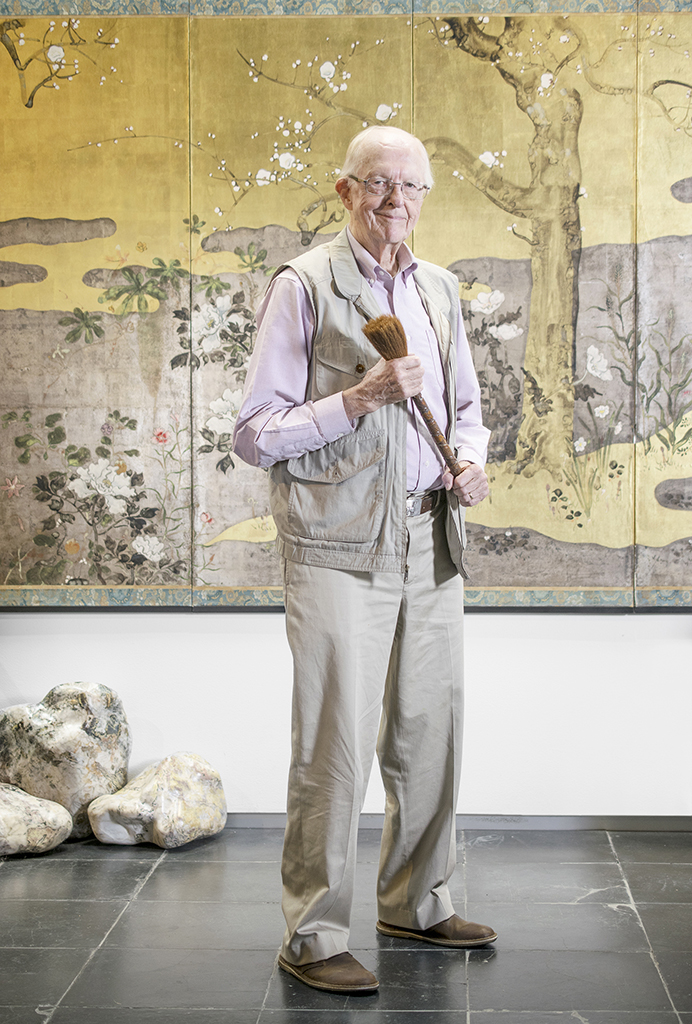 By George Johnson
By George Johnson
The Chinese calligraphy brush is a simple construction of two natural materials—a slender stalk of bamboo with a pointed tuft of hairs inserted into one end.
But we have learned that this most utilitarian of devices can also be the most precise of instruments. The demands of the calligrapher for absolute control of the flow of ink to paper defy description. Poems have been written about the perfect brush.
The relationship between the great calligraphers with their favorite brush makers is legendary. Fame and fortune flowed to brush makers who could fashion the brush that, in the hand of a virtuoso, would create characters worthy of engraving into a slab of jade.
But the brushes we have here appear to be another matter. Imagining precision from a blunt mass of hairs as big as a fist embedded in a handle designed for its own beauty or message—rather than an extension of the arm of the master—seems contradictory to a brush tradition of such refinement.
So, I try to imagine the place of these seemingly clumsy relatives of the ultimate instrument. It is this contradiction—this marriage of tradition and folk craft—that drew me to them.
Are they somehow a true part of the rarified air of the literati or just ornaments? Are they simply carriers of the infinite range of Chinese symbolism cashing in on a presumed association with perfection, and evocative of the vast expanses of time and geography that brought forth this oldest and most refined of art forms?
As my personal inclinations took hold, I began to focus more and more on the iconography. I have always been attracted to hand carved objects—from my family’s Black Forest animals, and creche figures, to decoys, Inuit soapstone, and Haida totems.
In these brushes, I found fascinating artesian expression inspired by ancient icons exquisitely executed on the cylindrical canvas provided by the brush form.
I believe there will always be a basis for discussion—even disagreement—here. I believe there are interesting questions about a handle and bristles that has strayed so far from the slender baton of the classic brush handle with the delicate point of its bristles.
These brushes invariably show very little use. There is little or no dried ink or color at the base of the bristles—no staining or wear marks on the ball—yet there is dust and caked dirt in crevices of the carvings. Everything indicates long exposure, as if on display in busy rooms.
While physically usable as brushes, they may also be ceremonial objects—perhaps acquired as a gift for a respected family member or colleague—perhaps a personal purchase for one’s own enjoyment or deeply felt aspiration—or, a family treasure to be passed down through the generations.
I can see family gatherings where the brushes are reverently passing around while the elders recount memories of beloved ancestors, and remind each other of the aspirations and messages depicted there and how they have inspired, and connected the family through time.
January 12, 2017: Dedicated to Betsy Nathan, who made it all possible.
— George Johnson
Images by Allison Knotts

Explore More
Treasures of the Scholars Studio
- Carved Bone Calligraphy Brush
- Cypress Brush Pot
- Ivory Calligraphy Brush
